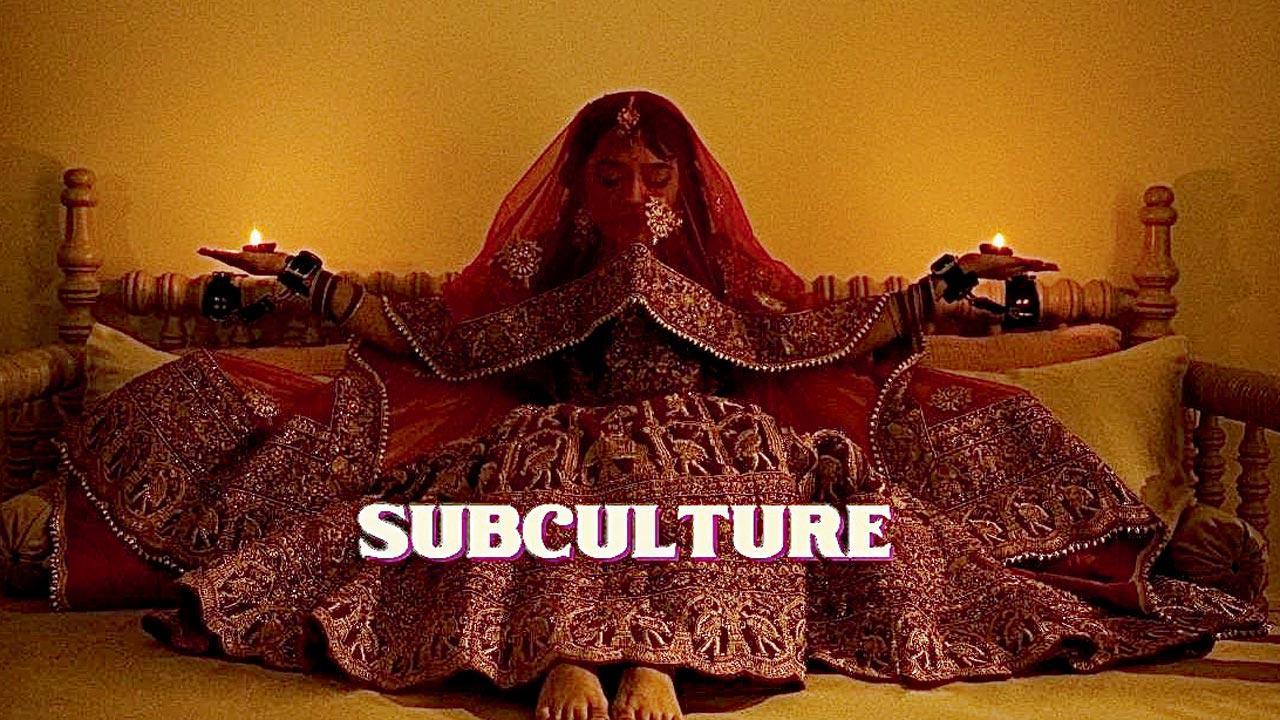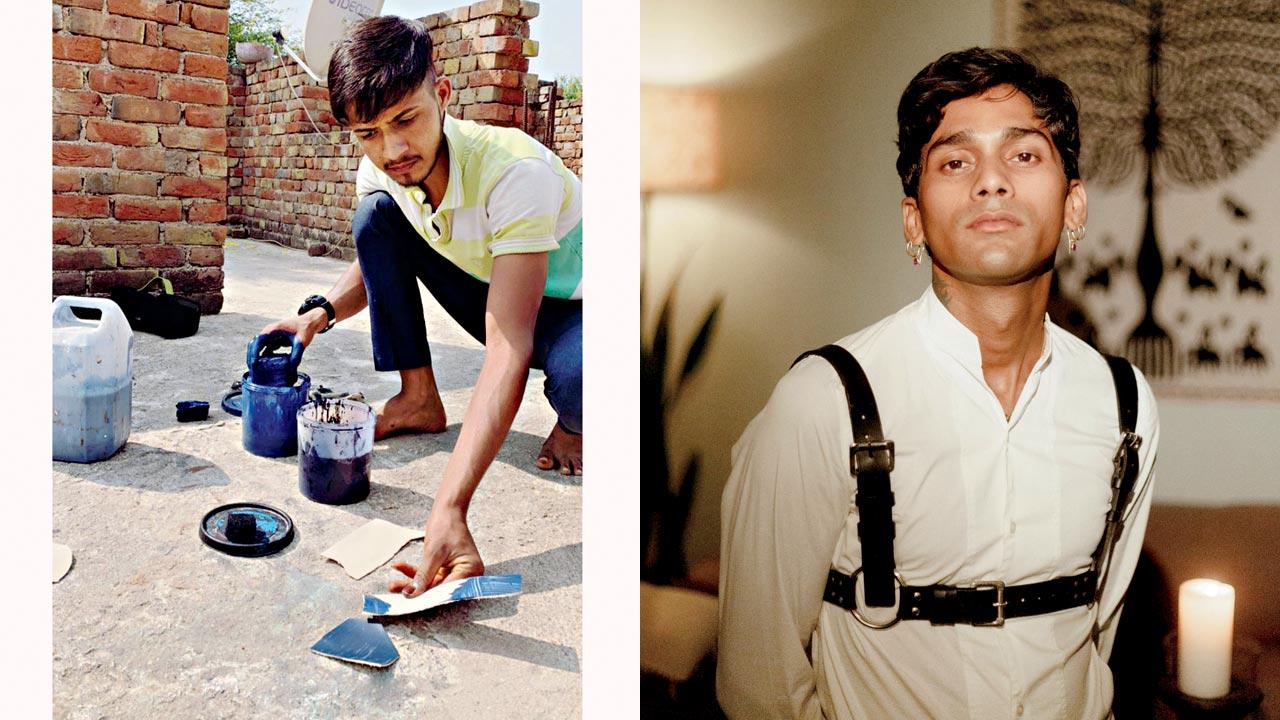A fetish-inspired fashion brand popular in Goa and Delhi is leveraging the traditional wisdom of the desert state’s generational leather artisans

Subculture weaves Indian context into its marketing campaigns and packaging. Pic/Rajat Pandit
Yeh kissi ko marne ke liye hai?’ the head of the family, Mahesh ji (Atal), asked me and winked as he held up the leather paddle,” Randhir Pratap Singh tells us over a video-call from Jaipur, “When I make a leather bralette or bustier, the lady of the house tries it on. The younger members follow me on Instagram and know what the products are for. It’s a typical Indian family—everyone knows everything, but no one talks about it.”
ADVERTISEMENT
Singh is talking about his brand, Subculture, the first in the country to make leather fetish wear, associated with the kink lifestyle. The manufacturing headquarters are in Kanpur and in Udaypuria—a village 50 kms away from Jaipur—helmed by a family of artisans who would traditionally craft juttis and leather-bound diaries. “The family has been working with leather for generations, and we’re almost like family,” says the designer who lives between Goa, Jaipur, and his family home in Lucknow. “I’ve watched them expand their home, build more pukka roofs after sales have grown, and enlist more family members in the unit. In Kanpur, on the other hand, it’s a factory line-like impersonal production of paddles, whips and hunters—they slap things on and move on.”

The common assumption is that Singh, who identifies as a cis man, is part of the S&M culture. “Actually, I am more interested in the fashion part of it,” says the Army kid. “As any child growing up in the 1990s, I was obsessed with what Madonna, Michael Jackson and Grace Jones wore. But I couldn’t find those harnesses and that latex wear anywhere in India. I do participate in events and play for research and inspiration for fetish fashion.”
Like any good middle-class kid, Singh was then preparing to appear for NEET and studying to become a doctor. And like many creative/artistic middle-class kids, he filled another form, with his pocket money, for the National Institute of Fashion Design (NIFT). “And I got through to the Delhi campus, which is the best,” he says.
 Artisan Vivek Sonkaria usually does the colour work and finishing of the leather pieces at the unit in Udaypuria; (right) Designer Randhir Pratap Singh plans to open a flagship store in Goa. Pic/Gourab Ganguli
Artisan Vivek Sonkaria usually does the colour work and finishing of the leather pieces at the unit in Udaypuria; (right) Designer Randhir Pratap Singh plans to open a flagship store in Goa. Pic/Gourab Ganguli
Once there, he studied leather works and found that once, the educational institute had a department dedicated to kink wear, which shut down due to lack of interest, but the fashion-wear became a chapter in the curriculum. “I knew I was not going to make shoes, bags or lehengas,” he says, of this time in 2015. “And there was a blank space in the market that I could fit into.” He would ask lovers and friends to bring down harnesses from the great liberal abroad.
But the right moment did not come until the COVID-19 imposed pandemic and the sexual revolution it brought. “So many sexual health brands like The Sangya Project came out then,” he says. “I was in Bali just before the pandemic, and then came to India. With nowhere to go, and it being hard to develop products, I had a whole year to research and design the products.”
There were no references in, so Singh asked Ms Google for references. And thus were born the harnesses, floggers, whips, gags, collars, cuffs, chokers, skirts, blindfolds and masks made of buffalo, sheep and goat skin. His new line, made of latex, stands on the threshold of launch.
But what is the market for these in India? Singh’s data shows that the largest market is Delhi, followed by Mumbai, Goa, Bengaluru and then Kolkata, and the age group is 30+, given that the goods are premium and at “Zara price range”. Then once in a while, the website will get an order from a small town in Tamil Nadu, Kashmir, or the North East.
He also sells directly at community events. “We’re sold out whenever we hold a pop-up in Goa,” he says, “Which is not surprising given that the culture there is far more liberal, there’s an expat population and that many people are on holiday there, and thus more adventurous.”
For the very same reason, his first flagship store, when it happens, will be in the sunshine state. “The plan is to move from premium to luxury and build a whole lifestyle around it—magazine, club, restaurant, hotel, jewellery…”
While the designs themselves are not yet Indian, the craft is. He brings in the aesthetic in the packaging with has erotic positions with multiple partners taken from the Kamasutra and temple walls. The advertising campaigns reference rituals and celebrations, and he hopes to bring out a line of city-inspired harnesses with landmarks etched on them. He is, of course, careful to keep the references vague, but playful.
Want kind of Indians would we be if we did not ask Singh what his family thinks of his profession. “I am the youngest in my two families [He was adopted by relatives when he was very young] and am used to being the colourful sheep of the family,” he smiles and shrugs. “And in a middle-class Indian family, being a designer means having an eccentric lifestyle. So, it’s expected.”
And what is it like to interact with artisans in rural Rajasthan that doesn’t meet too many tourists? We pose this question to the lean man we see on the phone: Wavy hair gloriously dishevelled like a halo reaching his shoulder, double piercings in both ears from which hand thin gold hoops and ruby drops on fish hooks, gold chains around his neck and shirt unbuttoned to frame the tattoo in Urdu ‘Lavahikeen’ nestled below his collar bones.
“The divide and conversation was more on the basis of caste,” he tells us. “Mahesh ji asked me, ‘Aap Rajput ho key yeh sab pehente ho’ gesturing to my earrings. My response was, ‘Pehle zamane mein Rajput bina paise diye kaam karvaate the. Main woh nahin karta.’ And, recently, Mahesh ji bought a pair of my old gold hoops and now wears them proudly!”
 Subscribe today by clicking the link and stay updated with the latest news!" Click here!
Subscribe today by clicking the link and stay updated with the latest news!" Click here!







